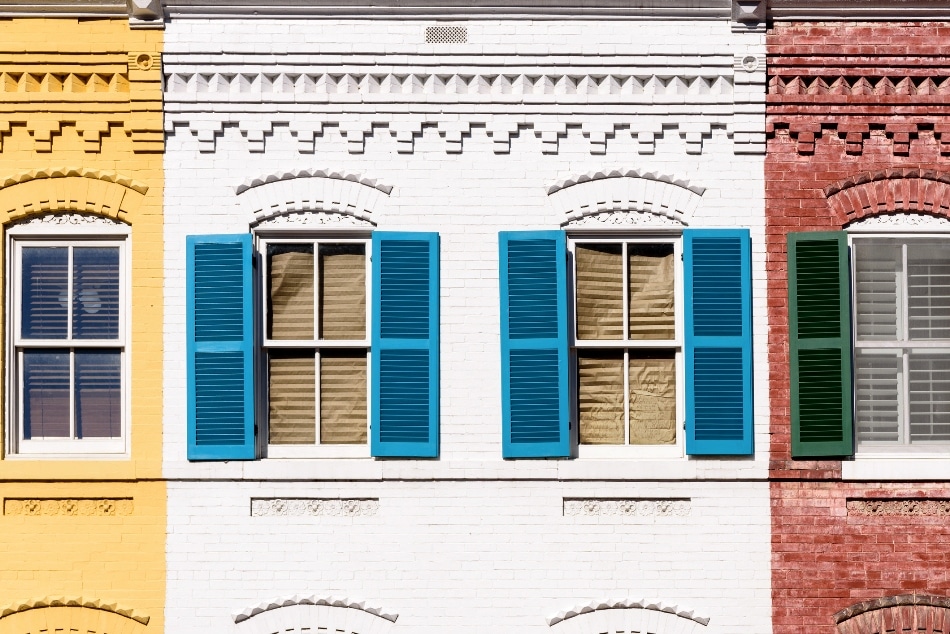Jul 10 2019
If walls could talk, they would probably tell that reducing pollution and energy costs may be as simple as giving them a fresh coat of lighter-colored and more reflective paint.
 Coating exterior walls with solar-reflective paints can lead to substantial energy savings in hot climates while curbing pollution, a Berkeley Lab study concludes. (Image credit: iStock/YayaErnst)
Coating exterior walls with solar-reflective paints can lead to substantial energy savings in hot climates while curbing pollution, a Berkeley Lab study concludes. (Image credit: iStock/YayaErnst)
A new study performed by researchers at the U.S. Department of Energy’s Lawrence Berkeley National Laboratory (Berkeley Lab) modeled a number of varied types and ages of office buildings, retail stores, and homes in cities across the United States and California.
The researchers discovered that sunlight-reflecting “cool” exterior walls—in a majority of places—is capable of saving as much or more of energy when compared to sunlight-reflecting cool roofs.
Usually, cool walls are believed to have a higher-than-average solar reflectance, implying that compared to average exterior walls, they reflect a higher fraction of incoming sunlight. Cool walls also have high thermal emittance, which means they can efficiently discharge the absorbed heat.
Cool walls provide energy cost savings and emission reductions across California and the southern half of the United States. In these climates, cool walls can save as much or more energy than the same size cool roof.
Ronnen Levinson, Study Co-Author and Staff Scientist, Berkeley Lab
Levinson is also the leader of the Heat Island Group at Berkeley Lab. The study has been reported in the journal, Energy & Buildings. He explained that walls receive less intense sunlight when compared to roofs, but they are also less insulated.
The study included an analysis of over 100,000 building simulations. The study’s lead author was Pablo J. Rosado, previously a mechanical engineering postdoctoral fellow in Berkeley Lab’s Heat Island Group.
The Heat Island Group studies the urban heat island effect—an increase in the outdoor urban air temperature induced by the concentration of roads, buildings, and other similar structures that absorb heat—and ways to combat the problem.
“Vertical Analogs to Cool Roofs”
Levinson informed that about a decade ago, he became interested in the science of cool walls while he was working on a cool-roof program in China. ”It was obvious in Chinese cities that there was a lot more wall area than roof area,” he stated. “I started thinking, ‘Should we look at cool walls as the vertical analogs to cool roofs?”
In most parts of the United States, approximately 40% to 60% of all buildings were constructed before 1980—the period when building codes usually specified relatively less wall insulation than needed nowadays. As a consequence, cool-wall savings in such older buildings that fulfill these older codes can be three to six times higher than those for the newly constructed buildings, found the study.
Repainting the exterior walls of pre-1980 buildings—whether homes or office buildings or stores—with cool paint offers the greatest benefit because they have the least insulation. And that’s not difficult to do. There are many light-colored cool paints in local home supply stores.
Ronnen Levinson, Study Co-Author and Staff Scientist, Berkeley Lab
Although no formal, universal definition exists for cool walls, Levinson proposed that higher-performance cool walls should reflect a minimum of 60%, while lower-performance cool walls should reflect a minimum of 40% of solar energy.
The study believed that 25% of sunlight is reflected by an average, uncooled wall.
Although light-colored walls are coolest, pigments that fluoresce and pigments that reflect the unseen half of sunlight can be used for making cool paints in an array of colors. Shiny, bare-metal walls are not likely to be cool because they release the absorbed heat slowly.
Savings Found Across California and Southern Half of U.S.
In warm cities of the U.S. from Florida and Miami to New Mexico and Albuquerque, scientists discovered that cool walls can lead to yearly heating, ventilation, and air conditioning (HVAC) energy costs savings of up to 4.6% for medium-sized office buildings, 8.3% for single-family homes, and 11% for stand-alone retail stores. In the case of single-family homes across all California climates, there were potential energy cost savings of 4% to 27%, the study found.
In addition, the study considered elevated energy costs in the heating season as well as energy savings in the cooling season.
The investigators discovered that cool walls provide similar reductions in yearly emissions of air pollutants like sulfur dioxide and nitrogen oxides, and greenhouse gases like carbon dioxide. Moreover, they tend to reduce the peak demand for electric power.
In addition, Levinson has reported a similar study in the journal Solar Energy that describes how cool-wall savings can be adjusted for the effects of reflection and shading by adjacent buildings.
Early Steps Toward Cool Wall Standards
Currently, there is some momentum toward ratings and specifications for cool walls, Levinson observed.
The Cool Roof Rating Council was established in 1998 as a nonprofit educational organization to support studies and rating systems for cool roofing products and act as a resource for boosting energy efficiency in buildings. The organization is pursuing to further expand the ratings for cool walls, Levinson said.
To amend its bylaws, the organization voted on June 12 to enable the rating of wall surface products.
The new study makes it obvious that a majority of places can considerably benefit from cool walls, Levinson stated. “If you have a hot, sunny climate, cool walls are for you.”
The research was supported by the Electric Performance Investment Charge (EPIC) program of the California Energy Commission, and by the U.S. Department of Energy’s Office of Energy Efficiency and Renewable Energy.